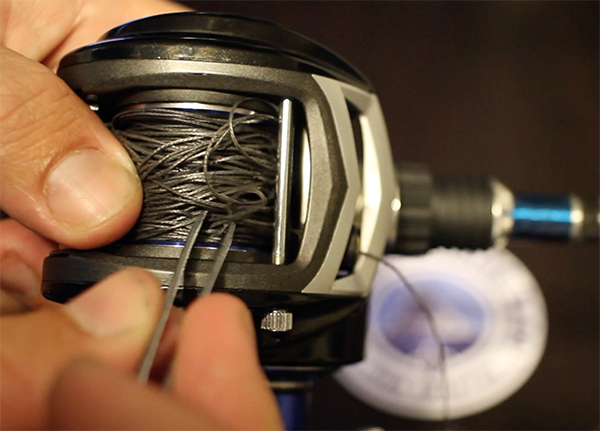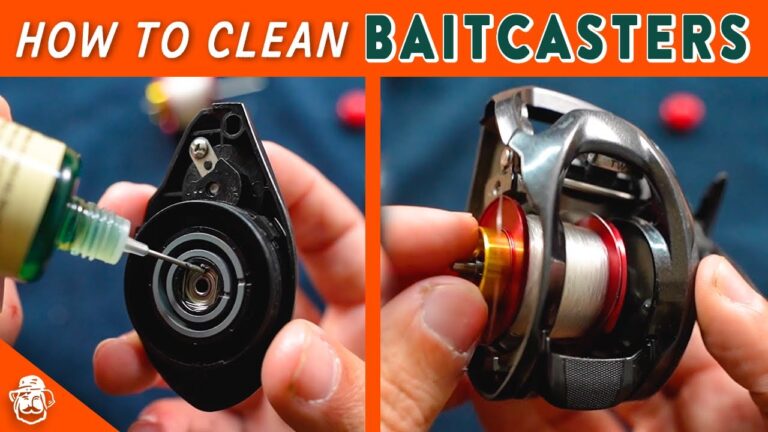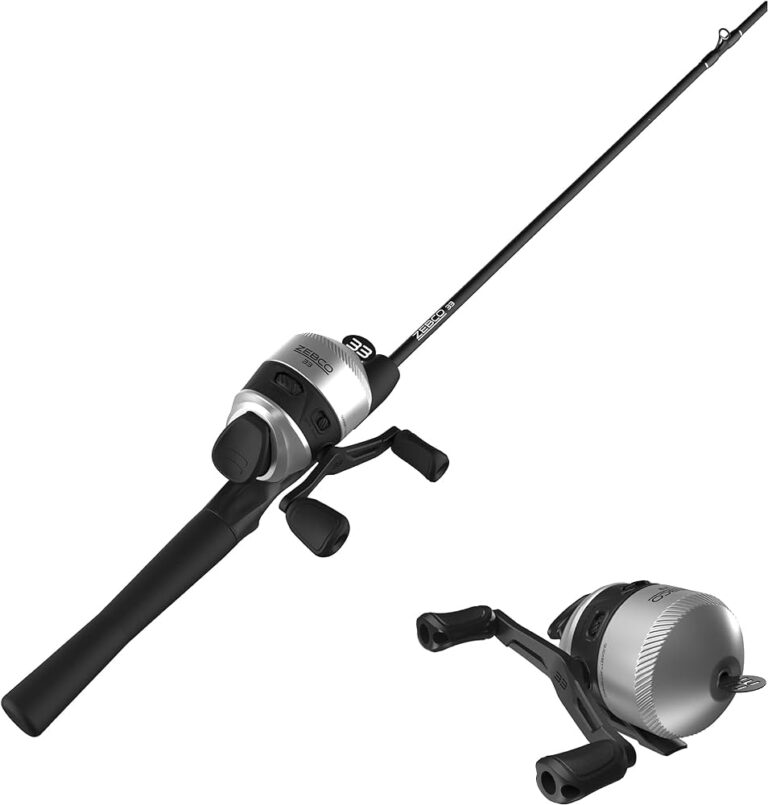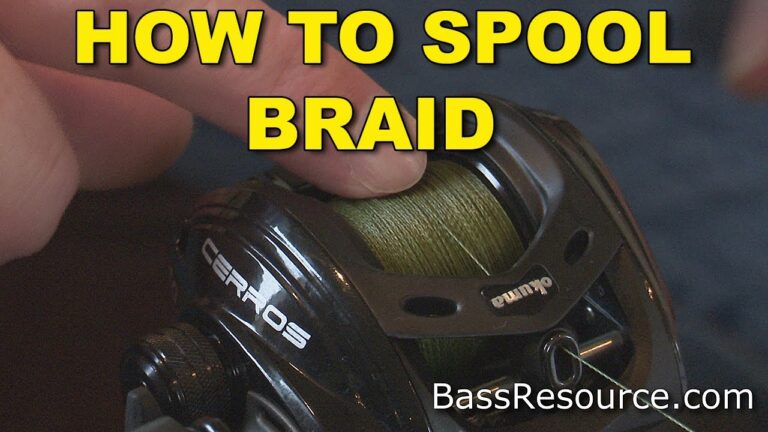How to Fix Backlash on Baitcaster
To fix backlash on a baitcaster, adjust the brake system and spool tension knob. Practice thumbing the spool during casting to maintain control.
Backlash, commonly known as a bird’s nest, in baitcasting reels can be frustrating for anglers of all levels. This tangle of the fishing line occurs when the spool spins faster than the line is being released. Preventing and fixing backlash involves a blend of fine-tuning your reel and mastering casting technique.
By setting up your baitcaster properly before you hit the water, you can significantly reduce the chances of creating a tangled mess. This guide will demonstrate simple yet effective methods to manage and rectify backlash issues, ensuring a smoother fishing experience. Knowing how to properly address backlash can save you time on the water and help you focus on the catch.

Credit: m.youtube.com
Introduction To Baitcaster Backlash
Baitcaster backlash is a common problem for anglers. It occurs when the spool spins faster than the fishing line unwinds. This can cause a nest of line on your reel. Major reasons include improper spool tension, wrong thumb pressure, or using a light lure with heavy settings. Such issues can lead to frustrating fishing trips and potential loss of bait and fish. Proper technique and gear adjustment are key to preventing backlash.
Backlash can reduce casting accuracy and distance. It also leads to wasted time untangling lines. Ultimately, it can ruin the fishing experience. Learning to fix backlash boosts your fishing efficiency and enjoyment.

Credit: www.lafishblog.com
Preventative Measures
Choosing the correct fishing line is key to avoiding backlash. Opt for a line suitable for your reel and target species. A mismatch can lead to tangles.
Adjusting spool tension with precision ensures smooth casting. Start by tightening the tension knob until it feels snug. Then, slowly loosen it until the lure drops steadily when released.
Regular practice improves your casting technique. Proper thumb pressure on the spool during a cast can dictate the flow of the line. Mastering this balance minimizes the chance of creating a bird’s nest. Practice makes perfect, and consistent casting sessions will lead to fewer backlashes.
Immediate Fixes On The Water
Experiencing backlash on a baitcaster can be frustrating. To fix minor backlash quickly, follow this simple step-by-step guide. First, stop casting immediately to avoid further line tangling. Gently pull on the line above the reel. Use your thumb to apply slight pressure as you reel in slowly. This technique often removes small tangles effectively.
For major line tangles, patience is key. Begin by turning off the reel’s brake. Carefully pull the line away from the reel to identify the source of the tangle. Once identified, use a pin or needle to loosen the knot. Work on the tangle slowly, ensuring not to make the problem worse. This method can require time but usually frees the line without the need to cut it.
Fine-tuning Baitcaster Components
Fine-tuning your baitcaster’s brake system is crucial for peak performance. Begin by turning the brake knob located on the side of the reel. A clockwise twist increases tension, while counterclockwise lessens it. Aim for a setting that allows the lure to drop slowly when released.
Next, perfect spool speed control with your thumb’s pressure. Apply steady pressure to maintain a consistent descent of the lure. Practice casting to find the right balance. This skill reduces backlash and improves casting accuracy.
Maintenance Tips
Regular cleaning keeps backlash at bay. Dirt and grime cause line tangles. Clean every part with care. Use soft brushes and cloths. The spool demands attention – keep it spotless. A clean baitcaster performs better.
Lubrication is crucial for the reel’s performance. Use only reel-specific oil and grease. Apply lubrication sparingly to the gear system. Focus on bearings and joints. Consistent lubrication protects against wear and fishing line backlash. Follow the manufacturer’s guidelines for best results.

Credit: www.tiktok.com
Advanced Tips For Seasoned Anglers
Seasoned anglers know that minimizing backlash needs special techniques. Spool tension is key. Adjust it for the weight of your lure. A properly adjusted brake system helps too. Keep your thumb slightly on the spool during a cast. This touch controls the spool speed.
Regular cleaning and lubrication is important. Clean reels cast smoother. Consider upgrading parts. High-quality bearings and a precision machined spool make a difference. Use lightweight lures? Get a shallow spool. It reduces the line needed. Less line equals less chance for tangles. A magnetic brake system is also useful. It’s another way to reduce backlash.
| Technique | Action | Benefit |
| Adjust spool tension | Match lure weight | Improves cast control |
| Thumb control | Moderate spool speed during cast | Prevents overruns |
| Clean and lubricate | Regularly maintain reel | Ensures smooth casting |
| Replace bearings | Opt for high-quality parts | Enhances reel performance |
| Install magnetic brakes | Manage line flow | Minimizes backlash risk |
Frequently Asked Questions For How To Fix Backlash On Baitcaster
How Do I Stop My Baitcaster From Backlashing?
To prevent baitcaster backlash, adjust the spool tension knob for each lure change, match your rod and reel to the lure weight, and start with a controlled casting technique. Practice smooth thumb control on the spool during casts, and increase the braking system to manage spool speed.
How Do You Fix A Backlash?
To fix a backlash, start by slowly turning the spool backward to untangle the line. Gently pull on the line while pressing your thumb against the spool. Use tweezers for small knots. Avoid pulling too hard to prevent breakage. Regularly clean and lubricate your reel to minimize future occurrences.
How Do You Get Out Of Backlash?
To handle backlash, promptly acknowledge the issue and apologize if necessary. Engage constructively with your audience, take responsibility, and outline clear steps for improvement. Maintaining transparency throughout the process can help rebuild trust.
How Do You Untangle A Bad Backlash?
Begin by gently pulling the line away from the spool. Use your fingers to loosen the snarls carefully. If needed, turn the reel backwards to reduce tension. Apply light pressure to the spool and continue unwinding slowly. Trim tangled line when necessary.
Conclusion
Conquering backlash on a baitcaster need not be daunting. Start by practicing patience and proper spooling techniques. Regular maintenance and fine-tuning tensions play a pivotal role. Embrace each outing as a chance to improve your casting finesse. Remember, with the right approach, backlash tangles become a thing of the past.
Happy fishing!
Also Worth Reading:
- How to Clean a Baitcasting Reel
- How to Oil a Baitcaster
- How to Put Braid on a Baitcaster
- How to Set Drag on Baitcaster
- How to Spool a Baitcaster by Yourself
- How to Spool a Baitcaster Reel
- How to Spool a Baitcaster With Braid
- Can You Put Braided Line on a Spinning Reel
- How Do You Fix a Fishing Reel
- How Do You Oil a Fishing Reel




